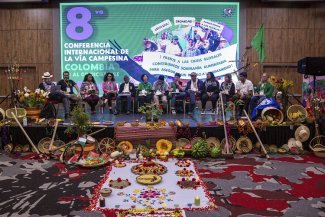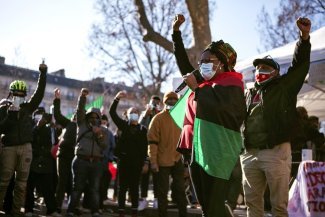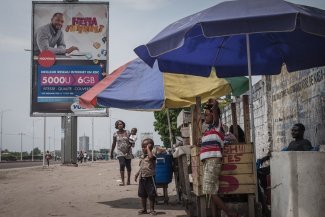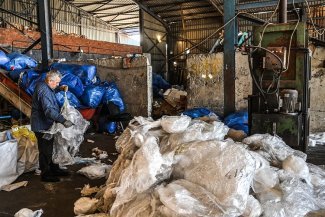The start of the new year ushered in the ASEAN (Association of Southeast Asian Nations) Economic Community, also known as AEC, the first step towards a European Union-style single trade and labour market for more than 600 million people across 10 member states. Although it will affect a larger population than the EU’s single market, the AEC lacks protection for the most vulnerable workers: millions of low-skilled migrants.
While heralded as a major step forward for a region hoping to challenge nearby India and China for economic supremacy, there are also concerns that increased mobility in the name of growth could leave more of those migrants as victims of human trafficking or modern slavery.
“The AEC’s core focus is only limited to highly skilled professionals," Raxiey Adolfo, project assistant at Migrant Forum Asia, tells Equal Times. “Low-skilled workers, which comprise a majority of the workers in ASEAN, are not part of the AEC. This strategy could potentially increase exploitation and human trafficking in the region.”
In fact, the AEC will not allow free flows of unskilled workers; it only focuses on trade, financial flows and skilled labour, which makes up a tiny percentage of the regional labour market. For Anis Hidayah, executive director of Migrant Care, an Indonesian NGO focused on empowering and protecting Indonesian migrant workers abroad, this is especially worrying.
“Under a platform that is only concerned with high-skilled labour, migrant workers, especially migrant domestic workers, will be the first potential victims,” Hidayah tells Equal Times.
Community disunity
At the core is the fact that the member nations of the AEC range widely in terms of wealth and size. At one end of the spectrum is tiny Singapore – one of the richest nations in the world in terms of per-capita GDP. Then there are young, populous Indonesia and the Philippines – two of the world’s top migratory countries with an estimated 6.2 million and 10 million of its citizens, respectively, working abroad at any given time.
At the other end are the least-developed members, Myanmar, Laos, and Cambodia, which are amongst the poorest countries in the world. Add to this the fact that most of the region is ruled by autocratic, sometimes authoritarian regimes, and you have an unwieldy giant that is not representative of its people and relies on consensus.
“ASEAN tends to avoid issues that even potentially infringe upon state sovereignty, usually citing the ‘ASEAN way’ of doing business as code for closed-door consensus and dealing-making outside the public domain to uphold the so-called norm of non-interference,” says Kevin McGahan, a migrant labor and human rights expert with the Global Studies Programme at the National University of Singapore.
That has meant, for the most part, ignoring low-wage and migrant worker issues in favour of business and trade deals. Under this system, individual countries can block meaningful protections for workers.
In fact, several nations in the AEC benefit from migrant worker populations. For example, Thailand is home to a large migrant workforce from its poorer neighbours, while Malaysia relies on migrants from Indonesia, Bangladesh and Nepal in its factories and palm oil plantations. Both are notorious for widespread labour abuses and human trafficking, with both in in the third tier of the United States Department of State Trafficking in Persons Report.
In fact, Malaysia and neighbouring Singapore, which also relies on migrants to provide homecare and staff its construction industry, are the chief countries standing in the way of better AEC migrant protection.
“The countries that have a strong resistance to a regional framework instrument... are Singapore and Malaysia,” says Adolfo. “They both are in disagreement with the adoption of a legally binding instrument to protect the rights of migrant workers and the inclusion of protections for undocumented migrant workers.”
According to Migrant Care, there are an estimated two million Indonesians working in Malaysia and Singapore, currently with few protections. This is a number that stands to grow over time.
“In Singapore and Malaysia, we have huge a challenge with migrant workers,” says Hidayah. In Malaysia alone, Migrant Care estimates that there are 288 Indonesian workers on death row, many for crimes they didn’t commit, or having been put on trial without proper legal representation. Thousands more are in detention centres across the country.
Too often, this legal limbo leads to tragedy, such as last September when an overcrowded boat carrying undocumented migrants who had overstayed visas, sank between Indonesia and Malaysia, killing 13.
Push for reform
Without stronger worker protection, what will result is more of the same, all in the name of economic growth that ends up in the hands of the few.
“The AEC could increase exploitation and human trafficking in the region,” says Adolfo. “It will only benefit transnational companies, multinationals and other big businesses in the region.”
But there is potential for change. Migrant-sending countries like Indonesia and the Philippines have been pushing to protect its citizens abroad. Moreover, civil society is also playing a role. Migrant Care has been pushing for a regional framework to protect migrant workers since 2007, when ASEAN adopted a declaration on migrant worker rights that, in reality, had no teeth.
What it’s hoping for is a binding convention, something it believes should have been in place long ago, but should finally happen this year.
“At the end of 2014, ASEAN just finished drafting a convention on the protection of migrant workers in region,” says Hidayah. “We hope that this year, this draft will be adopted, and help end any kind of slavery, violence and discrimination against migrant workers.”









